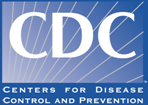Strategies for Reducing Health Disparities 2014
Introduction
 The 2011 CDC Health Disparities and Inequalities Report (CHDIR) was the first CDC MMWR report to assess disparities across a wide range of diseases, behavioral risk factors, environmental exposures, social determinants, and health-care access. A second CHDIR was released in 2013.
The 2011 CDC Health Disparities and Inequalities Report (CHDIR) was the first CDC MMWR report to assess disparities across a wide range of diseases, behavioral risk factors, environmental exposures, social determinants, and health-care access. A second CHDIR was released in 2013.
The Office of Minority Health and Health Equity (OMHHE) published a related MMWR serial report, the “Strategies for Reducing Health Disparities — Selected CDC-Sponsored Interventions, United States, 2014”. This report includes selected interventions that reflect effective public health actions supported by CDC that are proven effective or show promise for reducing health disparities at the local or national levels.
The four topic areas covered in this publication - HIV infection, immunization, motor vehicle injuries, and tobacco use - have been identified as CDC Winnable Battles. The projects described in this supplement demonstrate that interventions can reduce health disparities affecting vulnerable populations.
New Opportunities
This “Strategies for Reducing Health Disparities — Selected CDC-Sponsored Interventions, United States, 2014” report focuses on five CDC-funded programs. The main goals of this publication are to raise awareness that health disparities can be reduced and, at times, eliminated, to prompt actions to reduce disparities, and to encourage further development and implementation of evidence-based initiatives and interventions addressing health disparities and health inequities (disparities that are systematic, avoidable, and unfair).
This publication offers real-world examples of how public health programs can address health disparities. These examples include, among others:
- A randomized clinical trial demonstrating that an intervention for black men who have sex with men can reduce high-risk sexual activity and increase HIV testing rates;
- How ongoing political commitment has contributed to the long-term success of the Vaccines for Children (VFC) Program, the largest legally mandated program managed by CDC; and
- How four American Indian/Alaska Native tribal communities implemented evidence-based road safety interventions to reduce motor vehicle-related injuries and death.
Implementing programs such as these can help ensure that all have the opportunity for long and healthy lives.
Strategies for Reducing Health Disparities
Selected CDC-Sponsored Interventions, United States, 2014
MMWR Supplements, April 18, 2014, Vol. 63, Supplement No.1, Pg.1-48
- Page last reviewed: September 24, 2015
- Page last updated: April 18, 2014
- Content source:


 ShareCompartir
ShareCompartir



